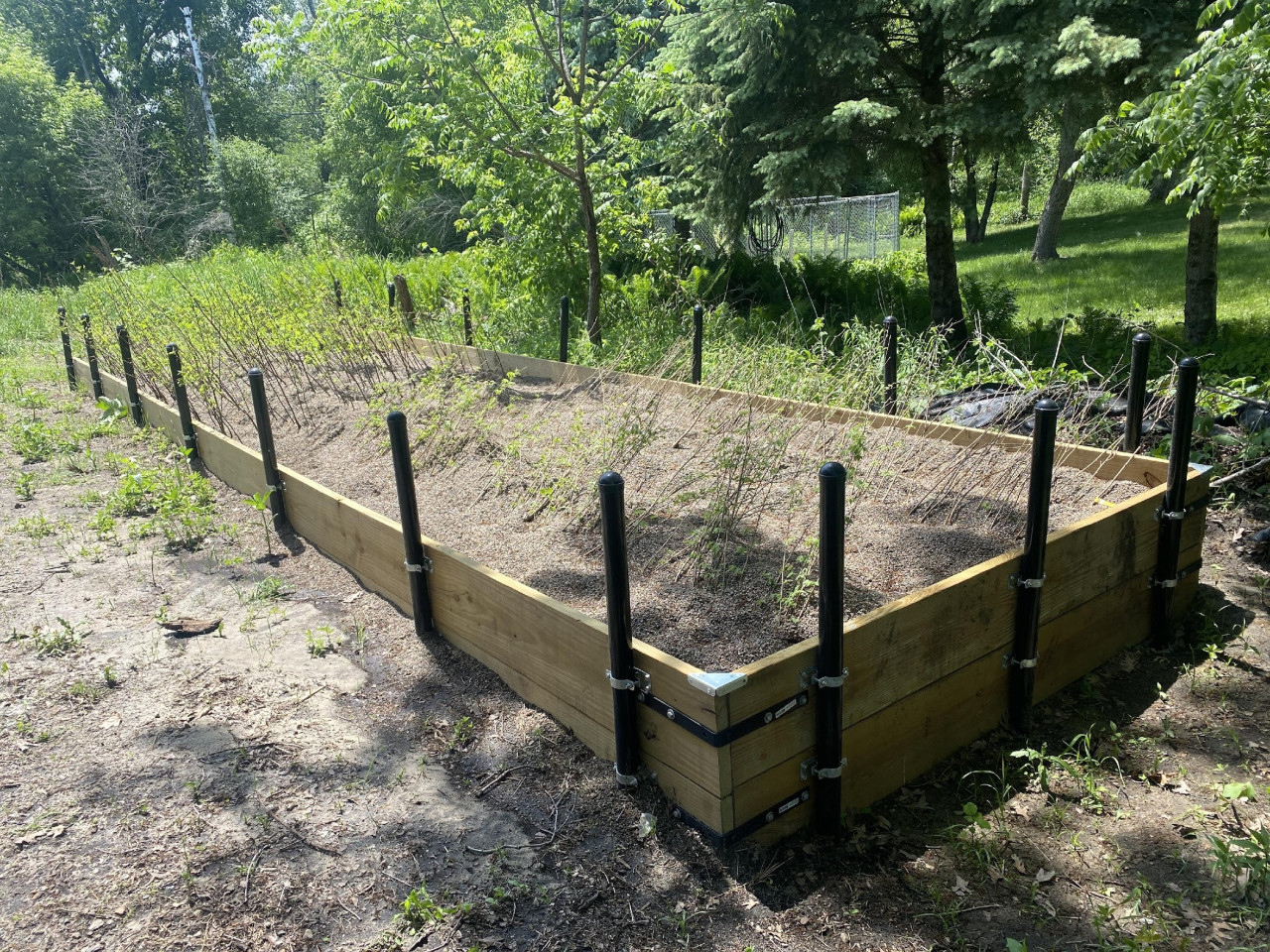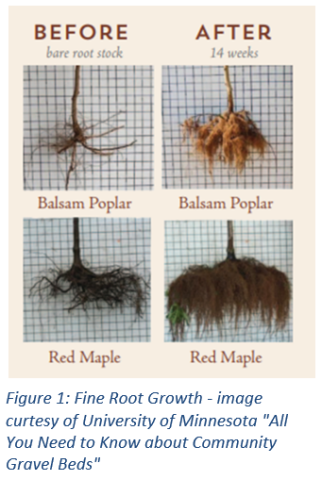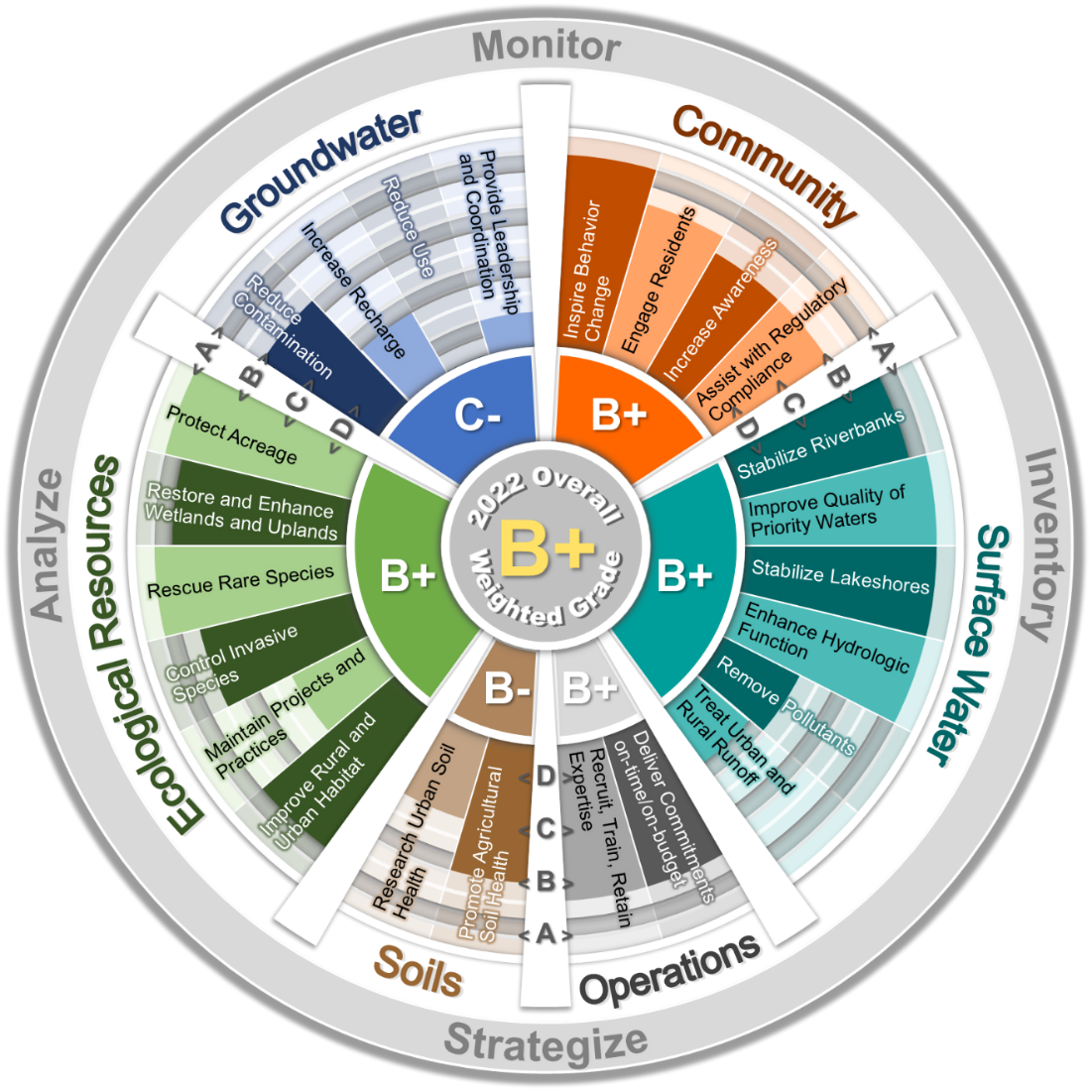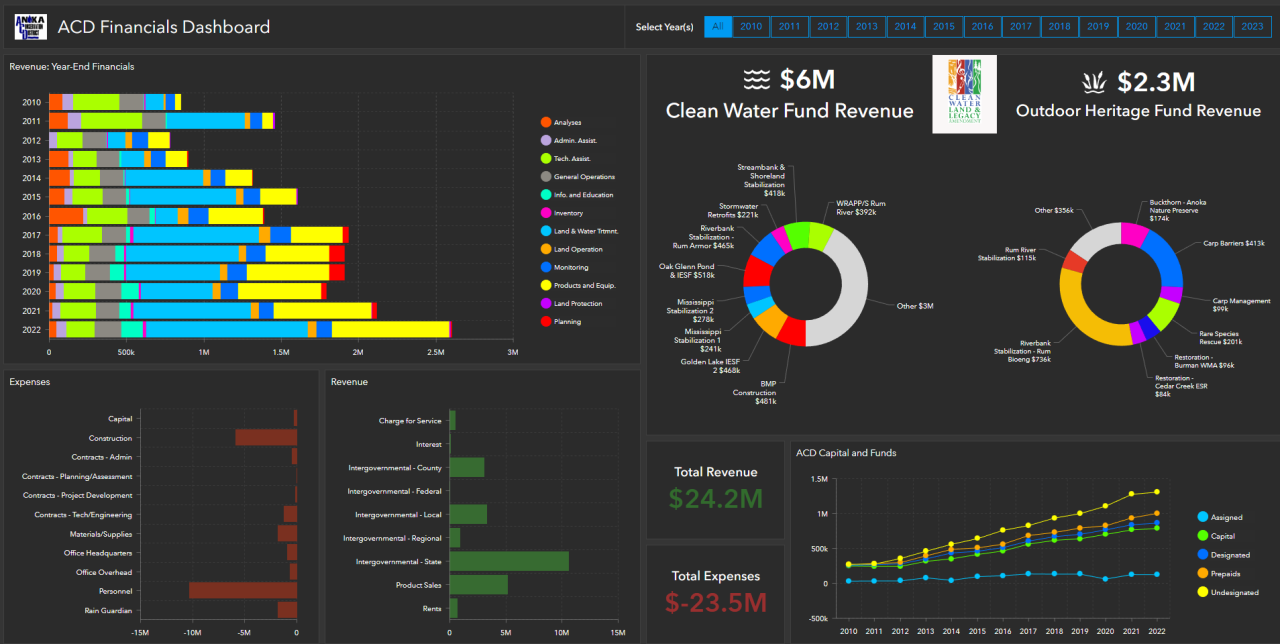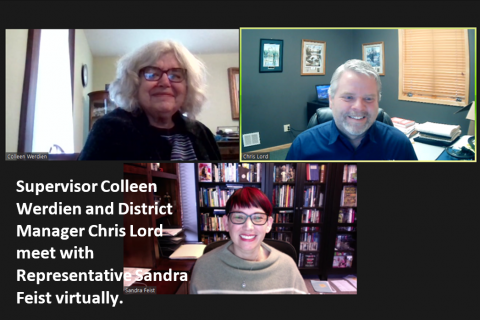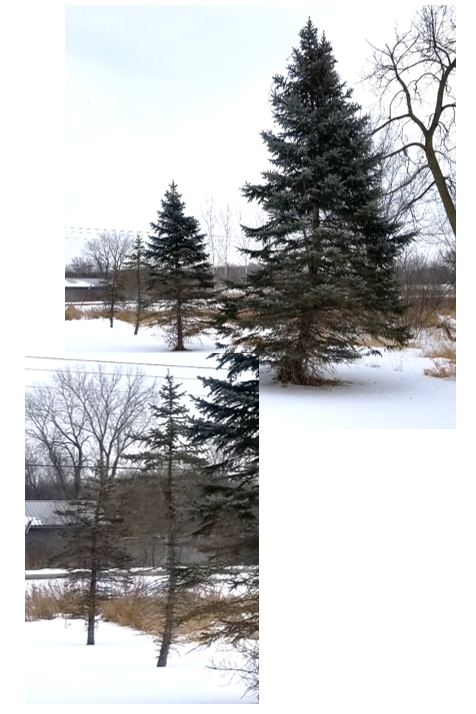Gravel beds are designed to store bare-root trees and shrubs while enhancing root development. Gravel beds can be crafted from anything that can contain 18-inches of pea gravel, or can even be made from nothing more then piles of pea gravel.
Plants placed in gravel beds become stressed and put energy into creating fine root systems to find nutrients and water. After a few months, the well-developed root systems increase survival rates after planting by several fold. Gravel allows for root growth while making the plants easy to remove. Gravel also doesn't degrade and inhibits the growth of pathogens and weeds.
Bare-root trees and shrubs are easier to handle, cheaper to purchase, and come in greater varieties. Since bare-root plants are often only available in the early spring, the gravel bed can store bare-root plants for projects that have a summer or fall timeline. Plants with healthier root systems and higher survival rates are particularly important on projects where watering newly planted trees and shrubs is impractical.
ACD's gravel bed was envisioned and designed by Ethan Cypull, a Minnesota GreenCorps member that is currently stationed at ACD. Construction of the gravel bed was completed by Ethan and other ACD staff.
For more information contact Ethan Cypull,
